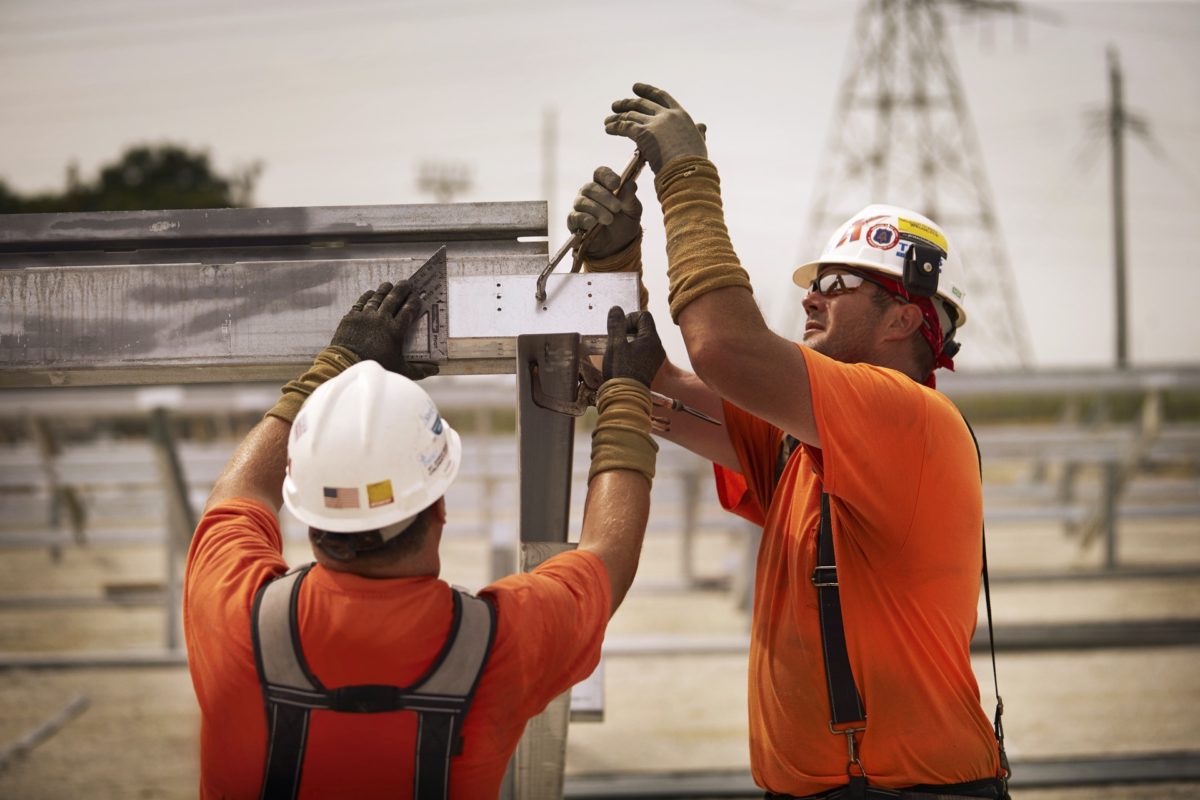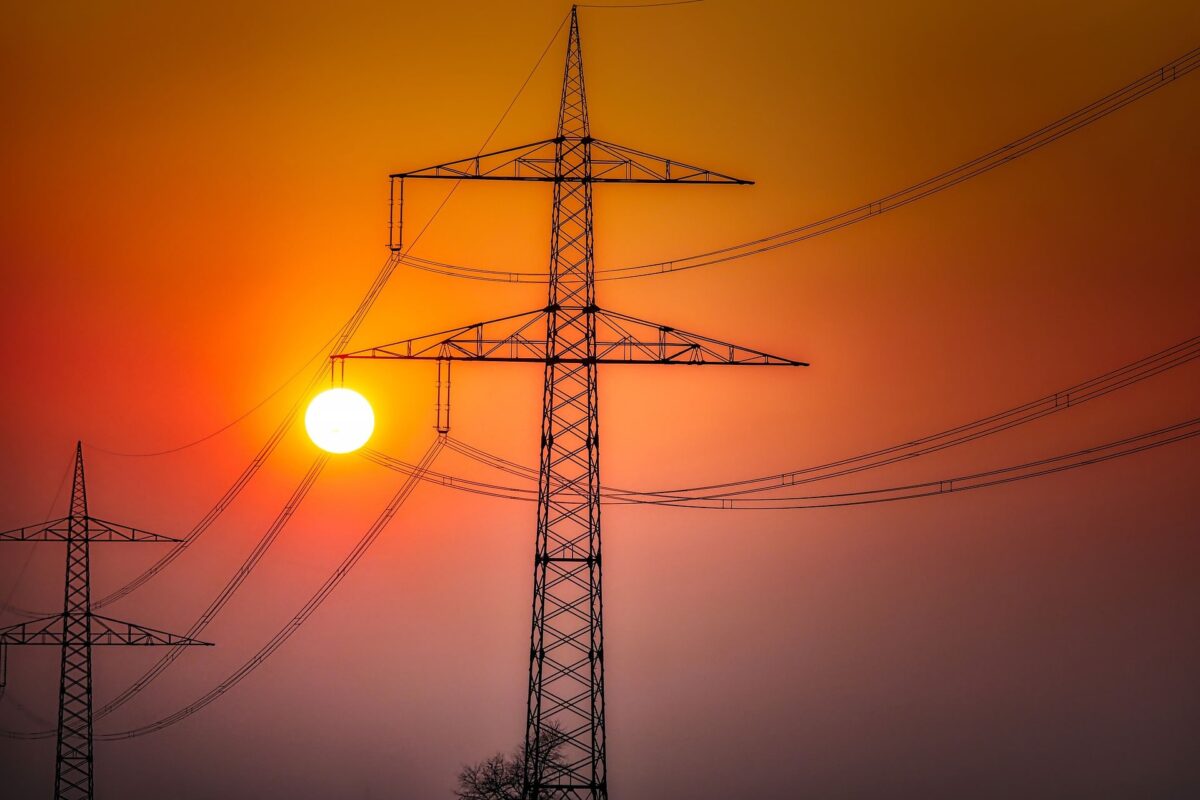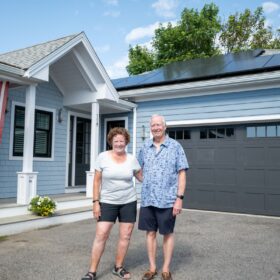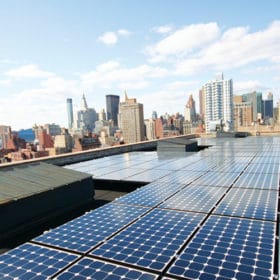The US solar industry plays a critical element in the movement to clean energy, as it would lessen our dependence on fossil fuels and allow many Americans to enjoy the myriad financial, environmental, and practical benefits of going solar.
The current energy landscape is already primed to move toward solar for three primary reasons:
First, the price of solar energy continues to plummet due to improved technology and reduced hardware and storage costs. Since 2010, solar costs have fallen 70%. Today, solar is the “cheapest source of electricity” in history,” according to the International Energy Agency.
Second, Americans are increasingly looking to phase out carbon-heavy appliances and electrify everything from their cars to their home heating systems. As a truly renewable form of energy, solar power will play a critical role in affordably and reliably electrifying American homes and businesses, while also lowering greenhouse gas emissions.
Lastly, record levels of extreme weather have created frequent power outages, dramatically increasing the need for improved disaster resiliency. You don’t have to look far to find examples: In February 2021, millions of people across Texas lost power after a record-breaking frost enveloped the state. Just a few months later, temperatures in Seattle were so high that concrete buckled and bridges had to be sprayed with water to keep from expanding, adding to the negative impact felt by the heat-induced rolling blackouts across the area.

Image: SolarReviews
These extreme weather conditions are only going to become more frequent, as are the ensuing devastating power outages. In light of these events, homeowners increasingly opted for the energy independence offered by solar panels. SolarReviews has seen significant spikes in solar interest in regions immediately following an extreme weather event.
But we need to make solar energy more prevalent, and the Build Back Better plan can help us do exactly that. As it is currently proposed, the package will increase the federal investment tax credit (ITC) from 26% to 30% and extend it for at least 10 years.
Earlier this year, SolarReviews surveyed US homeowners and found that the federal tax credit was the single most important financial incentive to install solar. That same survey found that it can take homeowners up to four years to research, shop for, and install solar panels. A 10-year runway for the tax credit would be critical in giving consumers peace of mind.
This change will significantly impact Americans who historically have been unable to afford the upfront cost of solar, despite needing relief the most from high energy bills. Residential solar installations would qualify homeowners to claim the full amount of the tax credit in the year after installation. This means more Americans in low- and middle-income brackets can install solar and lower their energy costs. The bill includes a 10% tax credit proposed for families living in low-income communities and additional 10% tax credit that can be realized by homeowners if a certain percentage of the solar parts are manufactured within the US.
The Biden administration said the bill will cut the cost of installing solar on a residential rooftop by 30% and reduce the payback period by five years. These are significant benefits for average Americans who want to lower their energy costs, improve their home’s resiliency, and help curb carbon emissions.
However, I believe this package will be far more beneficial than what the administration forecasts. SolarReviews forecasts this legislation will increase the rate of residential solar installations from a rate of around 750,000 homes in 2021, to more than 1.5 million homes per year by 2024. We expect this package will lead to the creation or continuance of more than 1 million solar jobs that would not exist without this legislation, in almost every town and city in America.
These are meaningful jobs. Solar is an inherently local business. The economically smart thing about supporting the residential rooftop solar industry is that the jobs it creates are spread out over the entire country, not just concentrated around one or two locations. A worker in New York can’t install solar panels on a home in California.
Until now, the US has not had a long-term strategy for solar energy. This is very, very smart legislation on several levels. Forget whether it is progressive, liberal, or conservative, it is just smart economics. The Build Back Better plan will enable more Americans and businesses to be involved in this promising industry that will save American’s money— and help our environment.
–Andy Sendy is Founder and President of SolarReviews.com
The views and opinions expressed in this article are the author’s own, and do not necessarily reflect those held by pv magazine.
This content is protected by copyright and may not be reused. If you want to cooperate with us and would like to reuse some of our content, please contact: editors@pv-magazine.com.








Instead of further increasing the national debt, we should pay for these solar subsidies by taking the money away from the direct subsidies and tax breaks which we give to the fossil fuel companies. Of course, that won’t happen since our corrupt lawmakers get millions in campaign donations, and who knows what other kickbacks, from the fossil fuel industry.
.
https://e360.yale.edu/digest/fossil-fuels-received-5-9-trillion-in-subsidies-in-2020-report-finds
Regarding my other comment about our corrupt system i.e. lawmakers receiving bribes (campaign donations) from the entrenched powers that be, the good news is, regardless of how corrupt things are, deriving electrical energy from solar is the CHEAPEST way there is now compared to using coal, natural gas, or nuclear. Therefore, I’m very hopeful that simple economics will win in the end. https://www.carbonbrief.org/solar-is-now-cheapest-electricity-in-history-confirms-iea
California’s PUC and Privately owned utilities have come up this it’s new NEM-3.0 plan to Charge customers for even having solar on their roofs or installing solar canopies at apartments, schools’ business or public buildings. This would negate any benefits that the “Build Back Better” program would give in tax breaks or discounts. The for-profit utilities would just skim off all those credits to profit their shareholders and executives. The problem with privately held shell companies that run utilities that sell both natural Gas and electricity, when half their business is in natural Gas and the state has mandated that natural gas to new homes and businesses is to be eliminated and the solar generated by homes that is banked under NEM-2.0 is being bought back on a kilo watt hour per kilo watt hour basis, in the winter, from natural gas fired generation plants, to homes that are shutting off their natural gas purchases and switching to electric heat. Where is the lost revenue going to come from? Higher Electricity prices, of course. Where did all the money come from to cut the prices by 20% to the poor in California? By raising the prices to the other 80% of the middle class and the wealthy. There is no free lunch and now the PUC and the Utilities have Residential and privately owned solar in their cross hairs as the next “Cash Cow” to offset declining sales in distributed natural Gas. Did anyone notice that commodity prices for natural gas have doubled over the past 6 months? Have you checked your gas bill for December 2020? Yep, the rate payers get the bill, including the poor except the smart people who now heat their homes with solar power. So, utilities have started a divide and conquer rich against the poor to push through the scheme to raise the costs on the solar community but still passing the costs onto everybody for their legacy costs and commodity price increases. Making Residential Solar the “evil rich guy” pushing the costs onto the poor is hog wash. The poor have been getting a 20% discount all along being subsidized by everybody else.